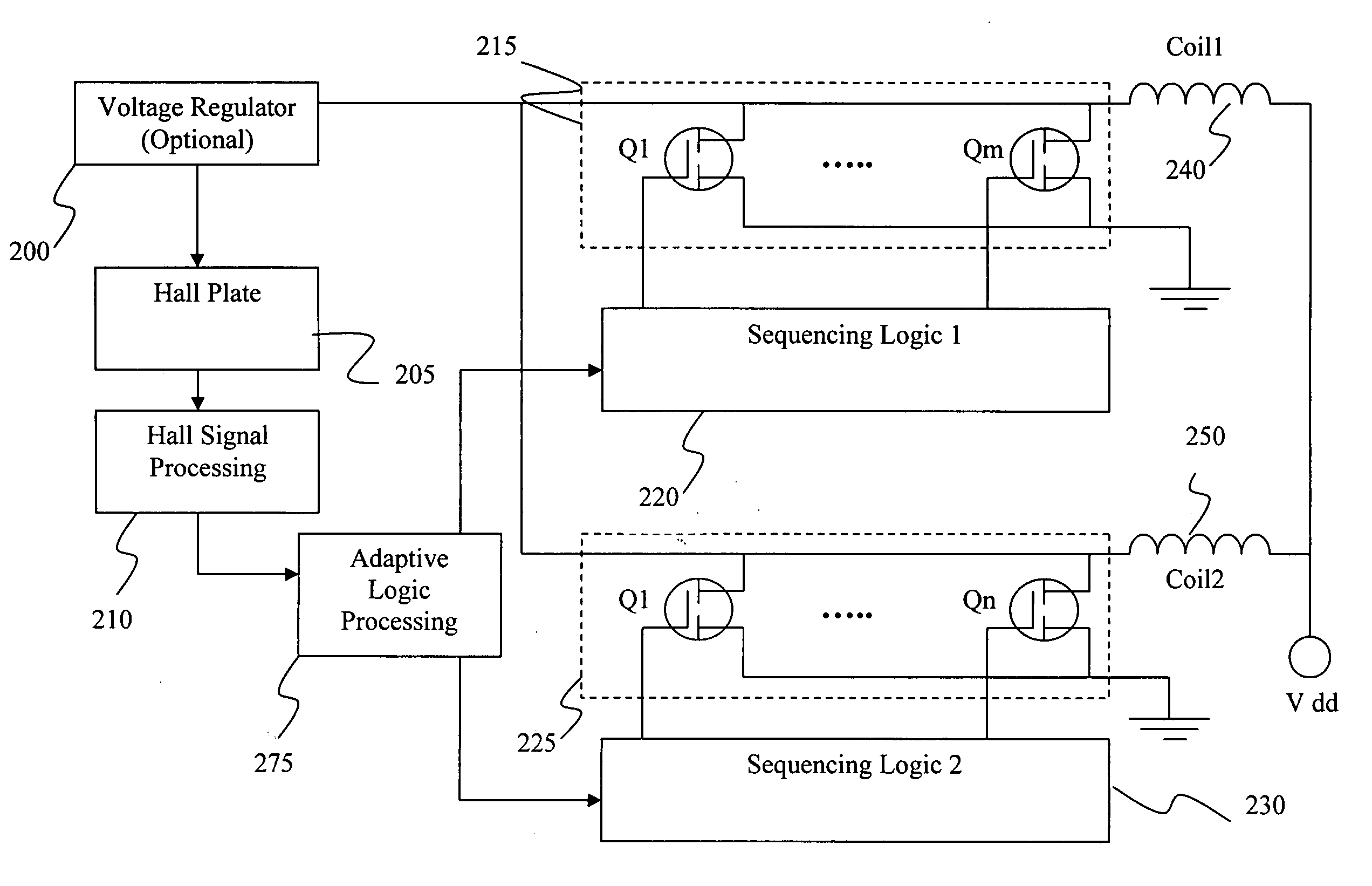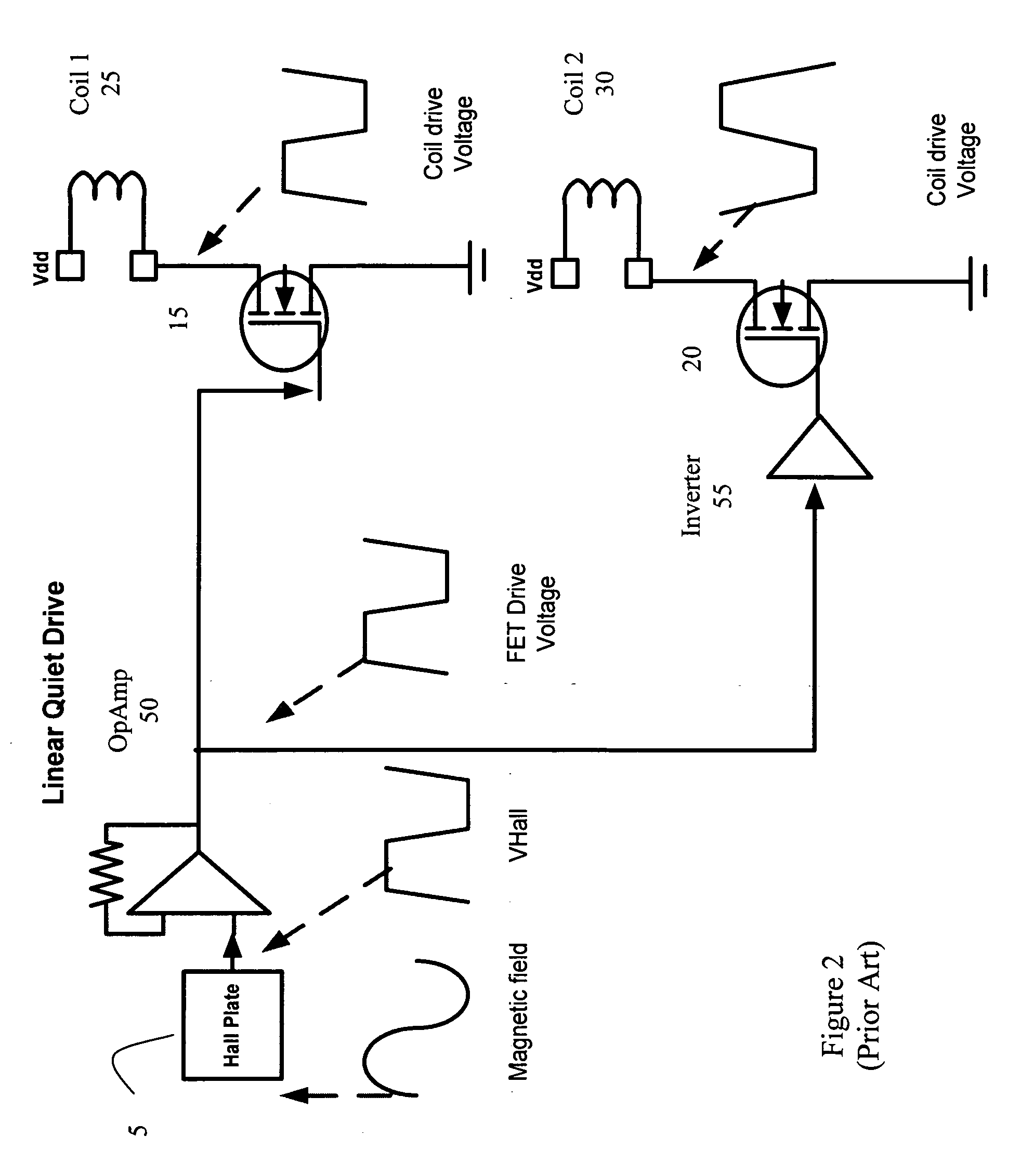Digital noise reduction for motors
a technology of motor noise reduction and digital noise reduction, applied in the field of motor noise reduction, can solve the problems of reduced longevity, reduced heat dissipation, and partial or catastrophic failure, and achieve the effect of reducing fan nois
- Summary
- Abstract
- Description
- Claims
- Application Information
AI Technical Summary
Benefits of technology
Problems solved by technology
Method used
Image
Examples
Embodiment Construction
[0042] In a simple form, the present invention reduces noise by controlling the drive current to gradually turn ‘On’ and / or ‘Off’ the motor windings of the fan or other, such as 1 phase motors, 2 phase motors, 3 phase motors and 4 phase motors. In one aspect, the present method approximates a linear drive by using a number of power transistors, such as field effect transistors (FETs), in parallel and sequentially processing the transistors, such that there is a gradual change in drive current between successive steps. As detailed herein, the commutation noise can be reduced by controlling the drive current to gradually turn on the motor windings rather than applying a square wave drive as is typically employed in the art.
[0043]FIG. 1 show a prior art configuration of a traditional noisy fan control arrangement for a two coil DC motor where the coil drive is a square wave. The fan noise is produced by rapid current changes wherein the dramatic switching of the current ‘On’ and ‘Off’...
PUM
 Login to View More
Login to View More Abstract
Description
Claims
Application Information
 Login to View More
Login to View More - R&D
- Intellectual Property
- Life Sciences
- Materials
- Tech Scout
- Unparalleled Data Quality
- Higher Quality Content
- 60% Fewer Hallucinations
Browse by: Latest US Patents, China's latest patents, Technical Efficacy Thesaurus, Application Domain, Technology Topic, Popular Technical Reports.
© 2025 PatSnap. All rights reserved.Legal|Privacy policy|Modern Slavery Act Transparency Statement|Sitemap|About US| Contact US: help@patsnap.com



